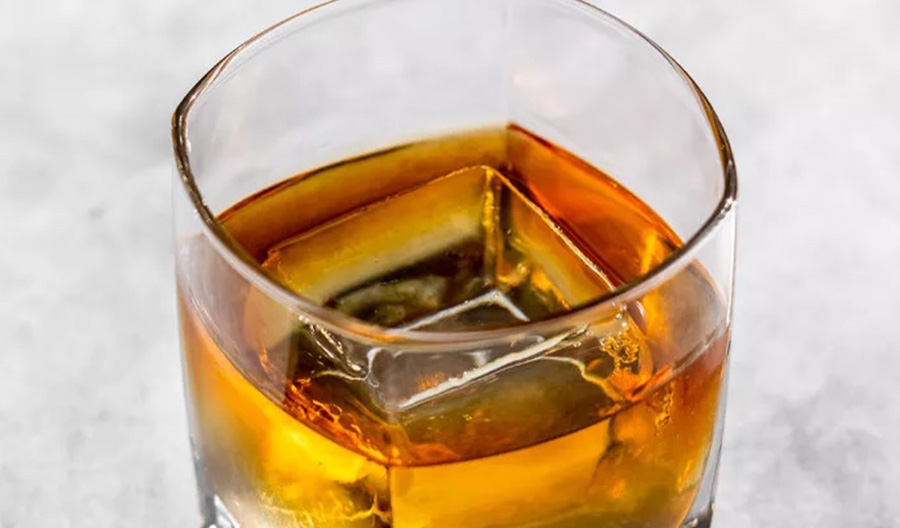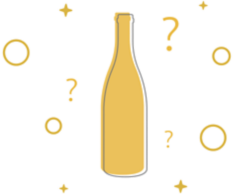The term “disco drinks” has been used in recent years to describe the cocktails that dominated the bar scene from the 1970s and '80s. Though it sounds fun, it’s sometimes used to imply a tackiness that’s at odds with the more serious drinks of the craft cocktail renaissance.
This era was often embodied in neon-hued drinks with names that were as bold as the ingredients, which often included pre-made mixers and frozen juice from concentrate. In retrospect, most felt more like dares than drinks. The trend extended into the 1990s, but the two preceding decades marked its heyday. And there’s no better representation of this trend than the cocktail books of the era.
Some of these drinks have escaped the surly bonds of the disco drink era to enjoy bona fide resurgences today, albeit with better ingredients and elevated bartending sensibilities.
Most of these books read like novelty publications now. Drink photos look gaudy or garish. Recipes call for phony ingredients and questionable-at-best ratios. But while it’s easy to poke fun at these cocktails, it’s also fascinating to catch the gleam of a drinkable gem among the erstwhile pages. Some of these drinks have escaped the surly bonds of the disco drink era to enjoy bona fide resurgences today, albeit with better ingredients and elevated bartending sensibilities. Others haven’t made that leap, but perhaps they should.
Here are some of the legitimately good drinks that have made a comeback—or deserve to, according to bartenders.
The Grasshopper
Several disco drinks were products of their time, but not all. This relentlessly green creamy concoction dates to at least 1919, technically making it a pre-Prohibition drink. The Grasshopper was a more basic beverage compared to the versions currently sweeping through the bar scene—the original recipe called for heavy cream, crème de menthe, and crème de cacao. This simple build gives it ample space for modern reinterpretation, like adding ice cream to thicken the drink or spiking it with vodka—a maneuver that turns the drink into a “Flying Grasshopper.”

An Austin bar takes a more adventurous approach using reposado tequila and two ounces of vanilla ice cream to make its Grasshopper. While neither move is unusual, the addition of frozen chapulines, or grasshoppers, makes this drink one of a kind. It delivers fantastic results: The bugs act as salt bombs that play off the drink’s sweeter ingredients, producing a sensation that’s not unlike dipping a French fry into a milkshake. The choice of spirit also helps lift the drink up from the dregs of its disco days.
In the '80s and '90s, the drink was just sugar upon sugar. The addition of tequila balances the drink out, so the sweetness isn’t overpowering. It’s really a great way to honor tequila.
Even without the enhancements, the Grasshopper is delicious when properly made. It’s also symbolic of a growing interest in experimenting with after-dinner drinks and dessert-like nightcaps. The genesis of this trend may come from a seemingly unlikely culprit. The loud red-and-white striped Dallas-based chain restaurant that is infamous for its off-the-wall ephemera, and bartenders of a certain age cut their teeth on making the restaurant’s indulgent drinks, such as the Mudslide.
"[Dessert drinks are] definitely a category for bartenders that remember the chain's cocktail section and are looking for something nostalgic" shares one Austin bar owner. “In a way, the category feels like the last frontier for bartenders that like to mess around with '70s and '80s cocktails.”
The Godfather
The disco drink era gave imbibers the popular if not inescapable 7&7, a two-ingredient cocktail that seamlessly doubled as a sleek ad campaign for both the whiskey and 7-Up for nearly two decades. Its ubiquitousness overshadowed The Godfather, another and daresay better two-ingredient cocktail that made a smaller splash in the 1970s.

The Godfather features a simple build of scotch and amaretto. However, it comes with a convoluted history. It’s generally agreed that the drink originated in the 1970s, yet its invention is a mystery. Its origin story typically involves the 1972 movie of the same name, but this serves as a drop-off point for debate.
While some say the drink lifted the name from the film, one amaretto brand claimed it was the preferred drink of Marlon Brando, who played the movie’s titular character. Since the recipe specifically called for the brand back then, however, this assertion feels more like a marketing ploy. The time feels right for a resurgence, partially because simple-to-make drinks are ideally suited for novice bartenders in a post-pandemic world.
Despite the drink’s quasi-connection to a cinematic classic, The Godfather remains stuck in relative obscurity. Yet, the time feels right for a resurgence, partially because simple-to-make drinks are ideally suited for novice bartenders in a post-pandemic world. “I hope more drinks like the Godfather come back,” says Fanny Chu, a freelance New York City bartender and former head bartender at the now-shuttered Brooklyn bar Donna. “The industry lost a lot of bartenders during the pandemic. The Godfather can help greener bartenders learn the basics and understand flavors. This can also help them become curious about things like variations, like what would happen if they replaced the scotch with mezcal.”
The Godfather’s simplicity doesn’t necessarily mean it’s basic. It can become too cloying if the ratios aren’t precise, which could explain why it hasn’t made a full-blown return. The cocktail was born at a time when jiggers weren’t consistently used, and amaretto’s sweet-forward profile defined the amaretto and almond liqueur market—not to mention the original recipe referenced the brand by name. These elements may have imbued the drink with a reputation for being overly sweet.
According to Chu, a few modifications, like experimenting with different amaretto liqueurs or adding bitters to further adjust the sweetness, can result in a better drink. “People need to be educated on the new brands, and we as bartenders need to learn how to play with them,” says Chu. “There are so many better ingredients and modifiers out there these days, there’s no excuse to just go straight on the old recipe.”
Between the Sheets
It seems fair to guess that Between the Sheets’ popularity in the 1970s and '80s was based on its naughty name. After all, this is the era that modified the humble Screwdriver and transformed it int the Slow Comfortable Screw Against the Wall. Purportedly created in the 1920s, Between the Sheets isn’t as vulgar as the Sex on the Beach or Screaming Orgasm. It allegedly originated at Harry’s Ba in Paris—specifically, from legendary bartender Harry MacElhone, who also introduced drinks like the Old Pal and the Scofflaw into the cocktail lexicon.

This history hardly mattered during the disco drink era, when romantic cocktail origin stories took a backseat to horny wordplay. Name aside, Between the Sheets deserves a comeback based on its ingredient list. Made with rum, Cognac, orange liqueur, and lemon juice, it reads like a rejection of the disco drink era. It also feels familiar, even if people can’t immediately recall the drink’s moniker.
This history hardly mattered during the disco drink era, when romantic cocktail origin stories took a backseat to horny wordplay. “Rum, cognac, juice—those are all classic specs,” says the bar director at a cocktail bar in Chicago. “Its notoriety is down there compared to other drinks, but it’s somehow still there. It’s like watching a movie where you see a guy and you think, ‘Hey, it’s that guy!’ The Between the Sheets feels like the ‘that guy’ of cocktails.” He also says the cocktail’s build—specifically, its use of Cognac—may be the very element that’s holding the drink back from a full-blown revival. “Cognac is out of vogue in cocktails,” he says. “Part of the problem is the marketing of cognac. It’s caused people to see it in just one way—as a sipper. People will drink Cognac, but they don’t like to put it in cocktails."
He theorizes that a big brand-backed marketing campaign promoting the drink could reverse this course, but he also points out there would be some hurdles to such a campaign, which brings the conversation back to its bawdy name. “We’re going through a period of conservative thinking in the country right now,” he says. “A cocktail named ‘Between the Sheets’ would do fine in Chicago. But in a place like rural Pennsylvania? People would have a problem with it.”
Appletini
It’s no surprise the Appletini has made a comeback. Nineties nostalgia is practically a cottage industry these days, and the drink’s traditional build of equal parts vodka, sour apple schnapps, and sweet-and-sour mix is about as '90s as a mixtape of Oasis, Counting Crows, and The Verve.

But the Appletini has disco drink roots, planted in the July 1972 issue of Playboy. A vodka brand ad on the issue’s inside cover for what it called the “Adam’s Apple,” a two-ingredient highball of “an ounce or so” of vodka and apple juice. A San Diego bar's take on the Appletini is very interesting on its own accord. It makes the drink with a blend of fresh apple juice and spices and serves it on draft, a process that results in a drink of subdued sweetness with nuanced apple pie notes. The drink achieves the bar’s goal of turning a cocktail with a bad reputation into a worthwhile drink, but it's owner also sees the Appletini’s comeback as a product of a post-pandemic attitude adjustment.
“Nothing’s ‘uncool’ anymore. There are no more guilty pleasures,” he says. “Covid caused us to re- evaluate what’s important. That’s led people to just embrace what they like and not care about what’s cool or trendy. I think that’s why the neighborhood bar has also made a comeback. It’s all about going back to just being comfortable.”
The drink achieves the bar’s goal of wanting to turn a cocktail with a bad reputation into a worthwhile drink, but he also sees the Appletini’s comeback as a product of a post-pandemic attitude adjustment. This disdain for cool in the cocktail scene may be the reason other '90s drinks of ill repute like the Long Island Iced Tea have resurfaced. These cocktails represent an opportunity for bartenders to “fix” drinks broken by fake ingredients and sabotaged by poor techniques— one that Shea believes could not have presented itself in the early days of the craft cocktail movement. “We needed the time to develop an appreciation for classic cocktails and a greater understanding of why real ingredients and accurate specs matter,” he says. “That kind of process is inherent in change, though. You have to be able to step away from something for a while before you can get back to it and make adjustments.”
More Where That Came From
From the Brandy Alexander to the more daring Midori-based drinks, to the Harvey Wallbanger, or even more blue drinks being found on cocktail menus, there are plenty of other disco drinks that bartenders would love to see make a comeback. Each of these drinks is the kind of concoction that a person may find while flipping through a cocktail recipe book from the '70s, '80s, or even '90s. In the context of the vintage printed page, they may appear to be weird, hideous, or borderline unpalatable. In the hands of a creative bartender with a heart for quality and craftsmanship, they can be magical
Each of these drinks is the kind of concoction that a person may find while flipping through a cocktail recipe book from the '70s, '80s, or even '90s. In the context of the vintage printed page, they may appear to be weird, hideous, or borderline unpalatable. In the hands of a creative bartender with a heart for quality and craftsmanship, they can be magical.

